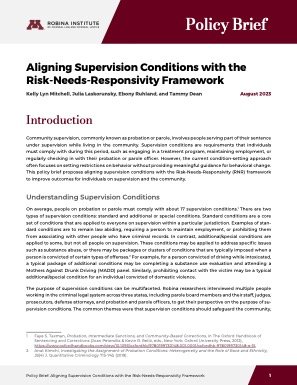By Brian A. Jackson, Pauline Moore, Jennifer T. Leschitz, Benjamin Boudreaux, Jo Caulkins, Shoshana R. Shelton
Violence by K–12 students is disturbingly common. Ensuring that schools have effective ways to identify and prevent such incidents is becoming increasingly important. Various concerning behaviors or disturbing communications, including direct threats, can precede acts of violence. Although removing every student exhibiting such behaviors might seem prudent, doing so can be counterproductive, limiting the effectiveness of safety efforts. With effective systems for behavioral threat assessment and management (BTAM), schools can assess and respond to concerning behavior to protect the community and respond to the student whose behavior caused concern.
To do so, schools need the tools to respond. Tools may include restrictive measures or law enforcement involvement in the most serious cases, but other options can be more effective. Those additional options include different types of mental health intervention, counseling, and other supports. Teams with extensive tools available to them can better customize interventions, increasing the chance of positive outcomes for all involved.
In this report, the authors draw on published literature and extensive interviews with education and public safety practitioners to build an inventory of the many intervention options that are valuable for schools in the management phase of BTAM. In addition, drawing on varied approaches from the fields of counseling, school discipline and behavioral management, and other professions that must match appropriate services to the needs of youth in their care, the report discusses decision support tools to help management teams implement this critical part of efforts in preventing targeted violence and keeping school communities safe.
Key Findings
Various Intervention Options Are Available for K–12 BTAM Efforts
Support-focused interventions can address the underlying causes of problematic student behavior and also lead a student toward a more favorable, positive path into the future.
By using supportive counseling and other interventions, BTAM is widening the options available for school leaders and staff to address problematic behavior that has the potential to develop into violence.
To be effective, school BTAM teams need a broad set of tools, including options appropriately matched (1) to the specifics of a student's problematic behaviors, (2) to the unique school community and environment, and (3) to the needs and circumstances of the student or students involved.
Insights from Education, Public Safety, and Other Fields Can Be Combined to Support Matching Effective Interventions to Student Needs
Decision support tools and resource-matching guidance can help ensure that school-based teams are collecting the information required to taking a holistic approach to address a student's varied needs and help promote appropriate consistency to ensure that disparities in how BTAM teams respond do not substantiate concerns that BTAM processes are unfair or inequitable.
Using structured systems to capture data when a BTAM team (1) interviews students involved in an incident, (2) collects school or law enforcement data, or (3) contacts others for information about a student of concern provides a more straightforward starting point for selecting among multiple intervention options.
Recommendations
To better inform intervention planning, intervention tools should be designed so that they prioritize collecting data on factors that can be changed because pieces of information in BTAM that may be a useful part of assessing the danger posed by an individual may be useless for intervention planning.
The inventory of intervention options developed in this study could provide a starting point for schools to make conscious decisions as they (1) review the options available to their teams and (2) identify any options they do not have access to but that could become valuable near-term priorities to strengthen their school safety efforts.
Progress monitoring data of BTAM efforts can help better support students while also helping schools become more responsive to external oversight of their BTAM programs and allay concerns about the fairness and equity of outcomes across different student populations.
Including positive mileposts into threat management planning not only could help lay out a path to full completion of all intervention activities but could also help define goals more specifically for an at-risk student, motivating even more beneficial outcomes.
Santa Monica, CA: RAND, 2025.





















